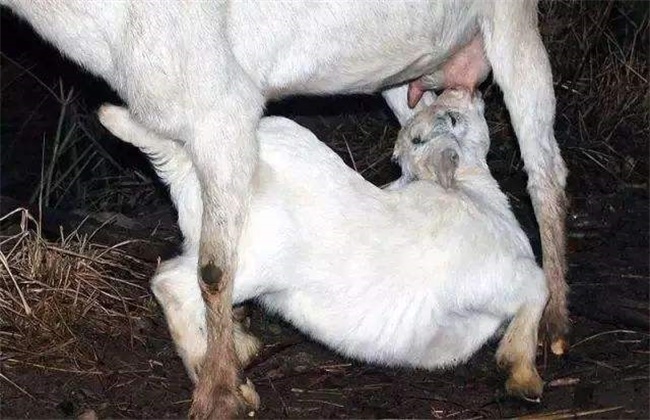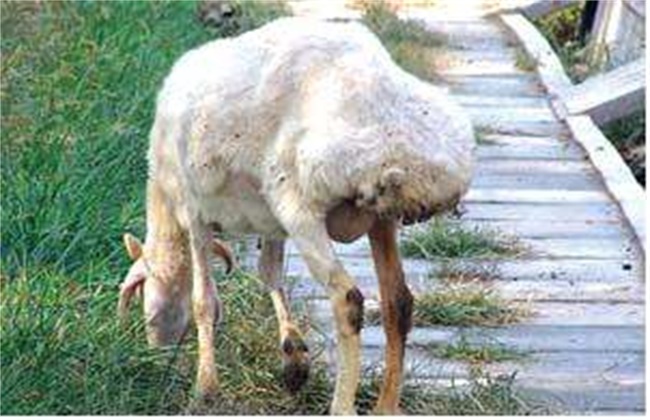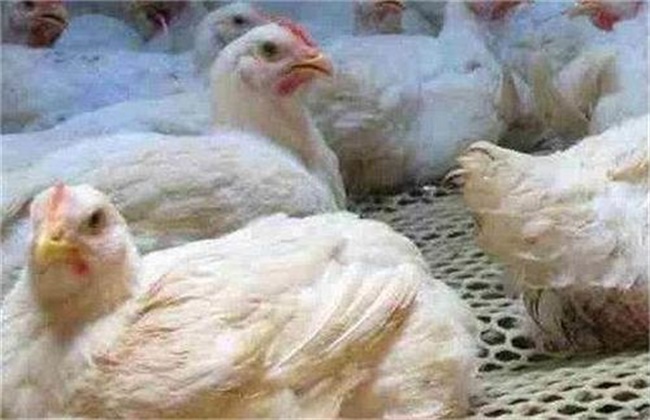The reason why the ewe does not allow the lamb to breast-feed and its solution
The main nutrition of lambs after birth needs to be absorbed from breast milk, but some ewes refuse to breast-feed them, which gives farmers a headache. If the lambs can't eat enough ewes, it will seriously affect their normal growth and health. It is very likely to die of disease. So what is the reason why ewes don't let their lambs breast-feed? What should I do? Let's take a look.

1. Insufficient milk
Ewes will refuse to feed because of lack of milk or lack of milk. generally, ewes with lack of milk or lack of milk show physical weight loss, breast shrinking or hardening, less or no milk milked by hand. On the other hand, the lambs show hunger because they can't get milk, and they will entangle the ewes to breast-feed, and the ewes will refuse to breast-feed for a long time.
Solution: ewes lack milk or lack of milk, in order to improve the feeding and management of ewes, they can be kept in captivity if possible, reduce grazing and lay eggs as much as possible, adjust their age, and feed concentrate rich in protein and easy to digest as far as possible. green succulent feed. Lambs should be fed and fed early in time to strengthen the water level and reduce the burden of breast-feeding of ewes.
2. Ewes are timid in temperament
Ewes with timid temperament will also refuse to breast-feed their lambs. generally speaking, ewes in this situation must be vigilant, flexible in ears, sensitive to sound, restless and shy away from any changes, especially when they come into contact with people.
Solution: in contrast to this kind of ewe, positive measures should be taken during the childbirth period, the attitude towards it should be gentle, it should not be whipped and frightened at will, special treatment should be given when feeding, and the head and body of the sheep should be often stroked to make it feel friendly and eliminate the sense of fear. If you refuse to breast-feed after giving birth, you can lick the ewe in the newborn lamb and establish a mother-child relationship.
3. Ewe mastitis
The ewe suffers from mastitis, local redness, swelling and hot pain in the breast, and also refuses to breast-feed the lambs, showing local redness and swelling of the breast, obvious reduction in milk volume, thinner milk, flocculent clots in the emulsion, sometimes pus, and even blood. In severe cases, in addition to local symptoms, it will also be accompanied by symptoms of elevated body temperature and loss of appetite.
Solution: when the ewe suffers from mastitis, it should be treated in time, squeeze the milk clean first, and inject penicillin and streptomycin into each affected leaf through the nipple hole. If the extruded milk contains more thick juice, you can inject a low concentration of disinfectant. After squeezing, a mixture of penicillin and streptomycin is injected until the inflammation disappears and the milk is normal.
4. Mixed animal husbandry mixed circle
The ewes of different delivery periods are mixed in an enclosure, and the older lambs grab the mother's milk of the young lambs to suck. Over time, the ewes will refuse to breast-feed the lambs.
Solution: for this situation, because the management is improper and normal, farmers should have special lambing rooms, and lambs of different ages should be raised separately to strictly prevent older lambs from grazing the mother's milk of young lambs. Once ducks are found, it can be stopped in time. For older lambs that have been banned repeatedly, separate grazing can be carried out to change this bad habit.
The above is the ewe does not allow the lamb to breast-feed the reason and the solution introduction, hope to help you, want to know more related knowledge, please follow us.
Related
- On the eggshell is a badge full of pride. British Poultry Egg Market and Consumer observation
- British study: 72% of Britons are willing to buy native eggs raised by insects
- Guidelines for friendly egg production revised the increase of space in chicken sheds can not be forced to change feathers and lay eggs.
- Risk of delay in customs clearance Australia suspends lobster exports to China
- Pig semen-the Vector of virus Transmission (4)
- Pig semen-the Vector of virus Transmission (3)
- Five common causes of difficult control of classical swine fever in clinic and their countermeasures
- Foot-and-mouth disease is the most effective way to prevent it!
- PED is the number one killer of piglets and has to be guarded against in autumn and winter.
- What is "yellow fat pig"? Have you ever heard the pig collector talk about "yellow fat pig"?



